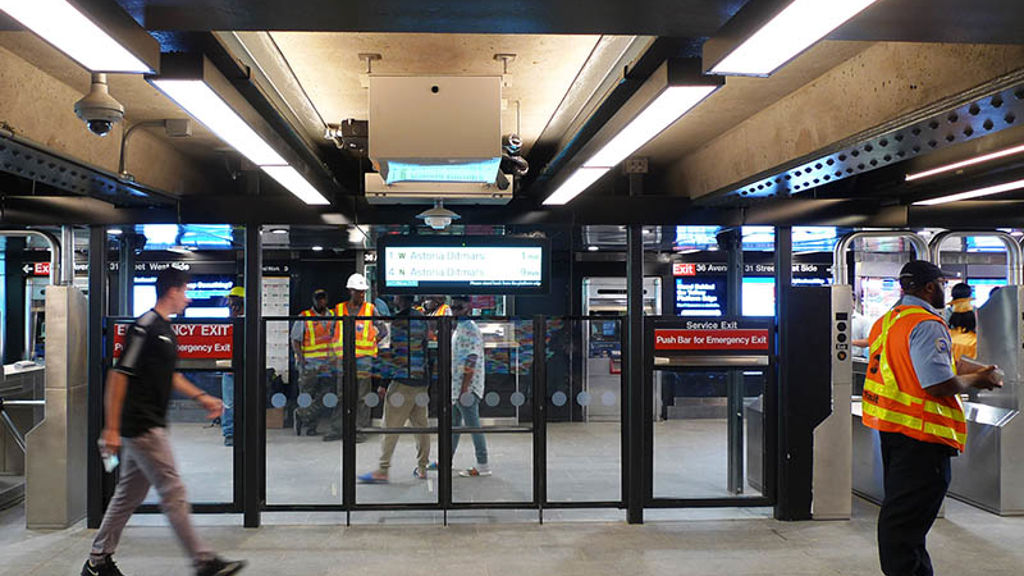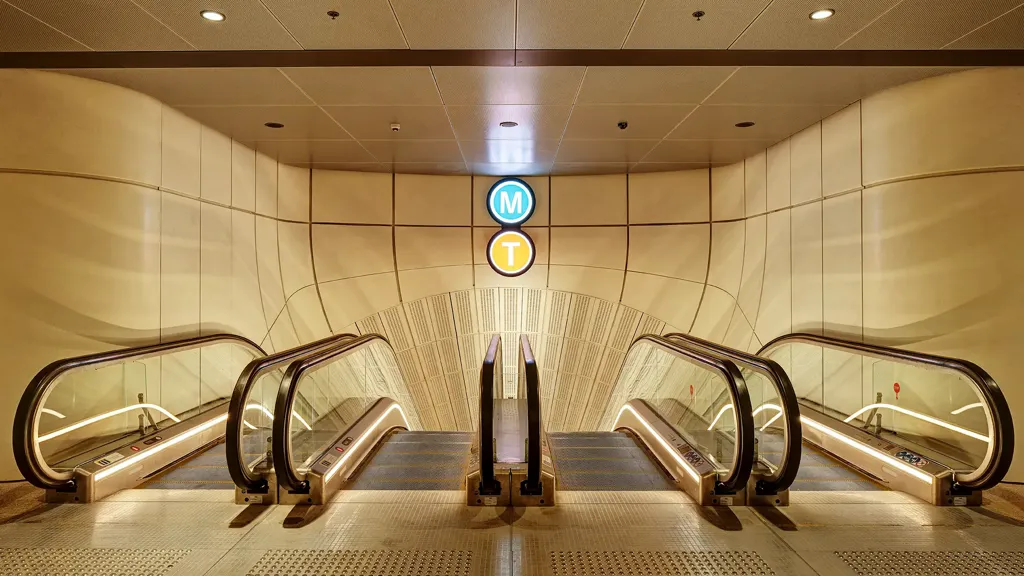Copenhagen's M4 metro line extension: five new stations to improve city connectivity
Copenhagen M4 metro line to Sydhavn and Valby

What we delivered
-
Detailed design for Copenhagen’s M4 metro line extension to connect the city centre with Sydhavn – south harbour district.
-
Our architects designed support systems to enable artwork installation across the M4 metro line extension.
-
Water-resilient skylights will protect the stations from potential extreme flooding events.
Get in touch with our team
Copenhagen has expanded its metro system with five new underground stations, connecting the city centre to the southern harbour district Sydhavn and the neighbourhood Valby. The extension of the M4 metro line aims to improve citywide mobility, alleviate congestion, and promote the development of neighbourhoods in the south of Copenhagen.
Arup delivered architecture, structural engineering, geotechnics, and tunnel ventilation design services to TUNN3L JV, the project’s design & build contractor. Our experts combined deep local knowledge and expertise in metro rail design with global engineering skill set to help shape the M4 metro line extension to Sydhavn and Valby.
Previously, Arup worked on the M3 loop line Cityringen and the M4 line extension to Nordhavn for the Copenhagen Metro (Metroselskabet), supporting the growth of the city's low carbon metro network.
Following Cityringen’s operational model, the M4 metro line will operate around the clock with high frequency services to the south harbour. Meeting the needs of a growing population, the extension offers a shorter and easier access to the inner city, while supporting the development of neighbourhoods in the south. To bring local character to the metro extension, all five stations feature specially designed artwork.
Artwork and metro design
Across the M4 metro line extension to Sydhavn and Valby, art has been seamlessly integrated into the station space, becoming a fundamental element of the architectural design to define the metro’s local character.
Arup’s architects worked on all five stations to create the interface between the civil structures and the artwork. The team designed support systems to make the art installation viable. From station to station, these systems vary to meet specific support needs and structure loads. Giving the M4 metro line extension to Sydhavn and Valby a distinct character, the art installations will welcome passengers as they enter the stations.
To balance the station-specific artwork, a seamless and visually unified lighting experience was created across the five stations through LED anti-glare fixtures. Our design, along with the adjustment of the lighting installations, enhances the visual comfort for passengers while minimising power consumption.
All architecture and lighting works were modelled in 3D Revit to ensure parametric accuracy and speed up the collaboration between design teams and architects.




Tunnel ventilation design
To ensure seamless integration with the existing M4 metro design, our experts completed the detailed design of the tunnel ventilation system for Sydhavn’s five new stations. The team carried out train fire simulations of the tunnels and stations’ platforms to size the fans. Using computational fluid dynamics (CFD), Arup’s specialists modelled smoke behavior in stations and crossover tunnels to understand how smoke would spread and ensure passengers can exit safely.
In the event of a fire, a minimum longitudinal airflow is needed in the tunnel to push all smoke in one direction and allow the passengers to escape in the other; the presence of an open portal maintenance depot presented an air leakage challenge to achieve this. To control the excessive air leakage, we installed jet fans at the Control & Maintenance Centre portals – the point where tunnels reach ground level. We increased the fan sizes at the junction shaft and designed the overall layout of the fans and dampers to adapt to the geometry of the M4 metro line extension to Sydhavn and Valby.
Water-resilient skylights structure
Skylights on the rooftop will provide natural light into the station’s interior and serve for smoke extraction. As the stations must continue to be safe for passengers during extreme weather, there was careful consideration of how the skylights would resist potential flooding events in the future.
Arup and TUNN3L JV façade engineers designed the skylights structure with added protection to withstand extreme potential flooding due to their harbourside location. The skylights are made of stainless steel and laminated safety glazing to endure water impact and large floating debris even if submerged underwater.

Collaboration for effective metro delivery
Supporting Copenhagen's sustainable urban transport network, the M4 metro line extension will provide growing southern neighbourhoods with easy access to the inner city and various transport modes like S-trains.
Working closely with contractor design teams, we have collaboratively challenged the original project brief to deliver practical and viable solutions for efficient construction management. For example, TUNN3L JV and Arup significantly reduced the depth of Enghave Brygge station, selected as the central point to start the tunnel construction for the M4 line to Sydhavn and Valby We removed a level by reshaping the space-proofing strategy, thus reducing the required station depth.
Allowing tunnelling to commence earlier, this optimisation accelerated the overall project timeline and decreased both the volume of excavated material and the amount of concrete used, leading to lower carbon impact.
This collective approach facilitated the seamless exchange of technical expertise between design teams. Arup used its global engineering skills and experience on local metro rail design to co-create feasible solutions on time.
Building on our continuous involvement in developing Copenhagen’s low carbon metro network, Arup continues to offer transformative design solutions for the city’s possible future M5 metro line.
Projects
Explore more metro and light rail projects

Realising a low-emission, efficient public transit vision for the Danish capital
Copenhagen Metro, Denmark

An ambitious station modernization program for New York’s subway system
MTA Enhanced Station Initiative, United States of America

Providing technical advisory for Parramatta Light Rail
Parramatta Light Rail Stage 1, Australia

Designing Sydney’s first integrated station development
Sydney Metro Martin Place integrated station development, Australia
Get in touch with us
If you'd like to speak to one of our rail experts about any of the issues raised on this page or a potential collaboration then please get in touch by completing the form.



